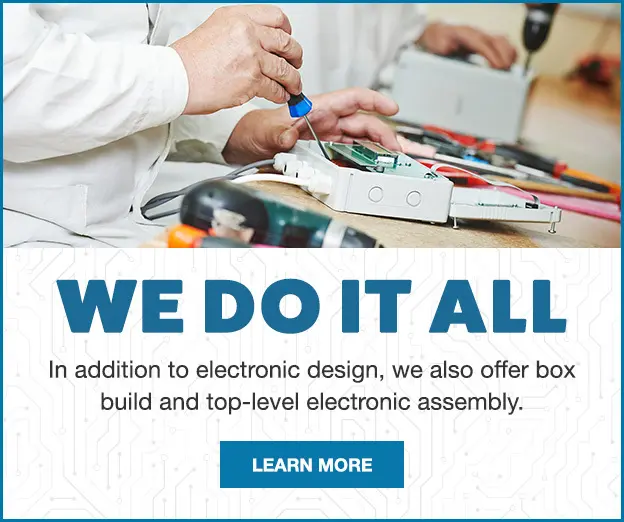Effective Supply Chain Strategies for Box Build and Cable Assembly
Imagine this: a production line is waiting on one small component to arrive. Everything else is ready—circuit boards are tested, enclosures are prepped, and workers are on standby. But that missing part is sitting in a shipping container halfway across the world. The delay halts assembly, pushes back delivery dates, and frustrates customers who were counting on a finished product. In the world of box builds and cable assemblies, this scenario happens more often than many would like to admit.
The complexity of sourcing for these projects makes supply chain management one of the most essential success factors. Each finished build depends on dozens, if not hundreds, of components. Without a smart strategy, delays, shortages, and unexpected costs can quickly spiral out of control. The good news is that with the proper supply chain practices, it’s possible to minimize risks, keep lead times short, and keep projects moving forward smoothly.
Why Supply Chain Strategy Matters in Box Build and Cable Assembly
Box builds and cable assemblies require tight coordination across multiple vendors and suppliers. A single assembly may include connectors, wires, PCBs, housings, fasteners, and labeling. When these pieces arrive late or in the wrong quantities, production schedules are immediately impacted. For manufacturers, this means the supply chain is not just a background function—it’s the backbone of operations.
A well-planned supply chain creates stability. It reduces the likelihood of scrambling for parts, cuts down on unexpected costs associated with expedited shipping, and provides confidence in meeting customer deadlines. By contrast, a weak or reactive supply chain leaves teams vulnerable to missed opportunities and frustrated clients.

Building Strong Vendor Partnerships
One of the most effective ways to strengthen a supply chain is by developing long-term partnerships with reliable vendors. Instead of treating suppliers as interchangeable, successful companies treat them as valued collaborators. This approach builds trust and fosters better communication, resulting in fewer surprises.
When vendors understand production schedules, they can better anticipate demand and make sure that parts are flowing smoothly. They may even offer insights into lead times, alternative materials, or upcoming industry changes that could impact availability. Strong partnerships also help when challenges arise. A vendor who values the relationship is far more likely to prioritize your order during times of shortage.
The key here is communication. Regular check-ins, forecasting shared well in advance, and a mutual commitment to reliability turn a basic transaction into a supportive partnership. In an industry where late parts can mean late deliveries, that kind of reliability is worth its weight in gold.
Reducing Lead Times with Strategic Planning
Lead time is often the biggest source of stress in a supply chain. Some components might arrive quickly, while others may take weeks or months. With global sourcing, delays can happen at ports, during customs, or even because of material shortages at the factory level.
Strategic planning helps address these challenges. Instead of waiting until inventory runs low, innovative companies forecast demand and order early. Buffer stock can also play an important role. Keeping an inventory of high-use components creates a safety net that helps avoid sudden shortages.
Another effective strategy is to diversify sourcing. Relying on a single supplier for a key part may save time initially, but it creates risk if that supplier runs into trouble. Having secondary vendors in place provides more flexibility and options in the event of delays.
Mitigating Supply Chain Risks
The last few years have shown just how fragile global supply chains can be. From raw material shortages to transportation disruptions, unexpected risks are always present. In the world of box builds and cable assemblies, those risks can directly impact production schedules.
To reduce vulnerabilities, companies should prioritize risk management from the outset. Some proven approaches include:
- Supplier diversification: Avoid relying too heavily on one vendor or region. Having multiple sources reduces exposure to disruptions.
- Transparent communication: Maintain regular updates with suppliers on inventory, shipping schedules, and lead times to ensure timely and accurate information.
- Inventory buffers: Stocking extra parts for high-volume assemblies helps protect against unforeseen delays and disruptions.
- Flexibility in design: Designing assemblies with multiple compatible components allows substitutions when specific parts are unavailable.
By treating risk as part of the planning process, rather than reacting to problems as they arise, companies can build resilience into their operations.
The Role of Technology in Supply Chain Management
Technology continues to play a significant role in strengthening supply chain strategies. Real-time tracking, demand forecasting software, and data analytics all help manufacturers gain visibility into the flow of components. This level of oversight enables teams to anticipate shortages, adjust production schedules, and make more informed purchasing decisions.
For box build and cable assembly projects, having this visibility reduces the likelihood of surprises. A delay that once might have gone unnoticed until the last minute can now be flagged weeks in advance, giving time to adjust and find alternatives.
Creating a Culture of Collaboration
Effective supply chain management is not only about tools and vendors—it’s also about people. When procurement, engineering, and production teams collaborate, decisions are made more quickly and with greater accuracy. For example, engineers may specify a component that is difficult to source, while procurement may know of an alternative that is more readily available. Open communication between departments facilitates a more effective balance between design requirements and availability.
This collaborative approach extends to customers as well. By providing realistic timelines and clear updates, manufacturers strengthen their reputation for reliability. Transparency fosters confidence, even in the face of challenges.
Long-Term Benefits of Strong Supply Chain Strategies
The benefits of a strong supply chain reach beyond on-time deliveries. Over time, consistent performance leads to improved customer loyalty, better margins, and opportunities to take on more complex projects. Companies that master supply chain strategies often find themselves better positioned for growth, since their operations can adapt more easily to changing conditions.
For box build and cable assembly operations, where precision and timing are everything, these benefits are magnified. A project that arrives on time and within budget isn’t just a success—it’s a foundation for the next opportunity.
Turning Challenges Into Opportunities
Box build and cable assembly projects rely on more than just skilled assembly. They rely on a steady flow of parts, strong vendor partnerships, and the ability to anticipate and manage risks. By prioritizing supply chain strategies, companies not only reduce delays but also build a reputation for reliability and quality.
If your organization is looking for a partner with proven supply chain strategies that keep projects moving, Levison Enterprises is ready to help. Contact Levison Enterprises to learn more about how their team can support your next box build or cable assembly project.
Start Your Quote Now!